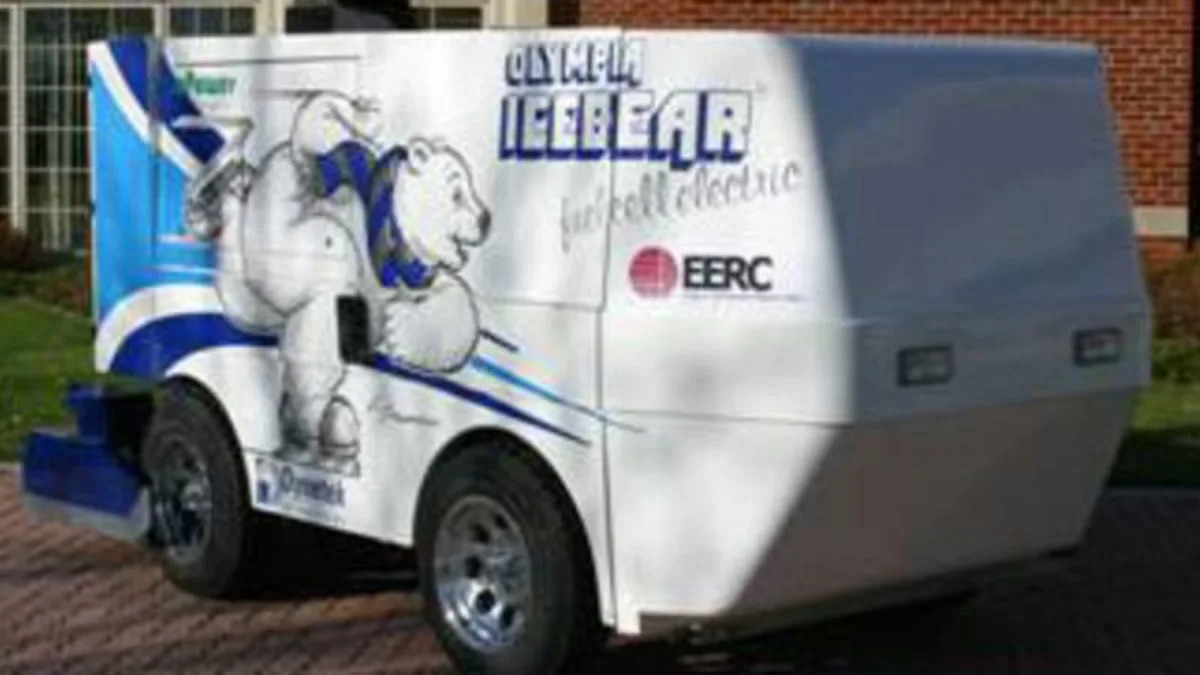OK, technically this thing there on the right is not a Zamboni (because that's a trademark and all that), But, c'mon, would you really know what I meant had I used the technically correct "ice resurfacer" in the headling? That's what I thought.
I've never really given much thought to how, ahem, ice resurfacers are powered. They come out onto the rink between periods, everyone has a good cheer at the funny boxes on wheels and then heads for the can.
But these vehicles are being used indoors (well, not all of them) and most of Zamboni's lineup is powered by standard propane-fueled engines (this one is electric). Burning fuel inside creates a potentially unhealthy situation, so getting rid of those fumes is a good idea.
Enter the U.S. Department of Energy and its incessant drive to make hydrogen vehicles work for America. The DOE supported the University of North Dakota's Energy & Environmental Research Center, through its National Center for Hydrogen Technology, in creating the fuel cell-powered eP-ICEBEAR. The vehicle has been demonstrating its capabilities in ice rinks across America since 2005. The Icebear is powered by a 5 kW PowerFlow fuel cell power module made by Nuvera Fuel Cells and has been well-received as far as I can tell. No word yet on when these will be offered for sale, even though Nuvera folks were hoping it'd be "soon" back in 2005.
Also, since we all know that the only thing hydrogen vehicles emit is water (or water vapor), how does that affect the vehicle's job? It'd be really cool if the "exhaust" is actually used to resurface the ice.
Related:
[Source: DOE]
I've never really given much thought to how, ahem, ice resurfacers are powered. They come out onto the rink between periods, everyone has a good cheer at the funny boxes on wheels and then heads for the can.
But these vehicles are being used indoors (well, not all of them) and most of Zamboni's lineup is powered by standard propane-fueled engines (this one is electric). Burning fuel inside creates a potentially unhealthy situation, so getting rid of those fumes is a good idea.
Enter the U.S. Department of Energy and its incessant drive to make hydrogen vehicles work for America. The DOE supported the University of North Dakota's Energy & Environmental Research Center, through its National Center for Hydrogen Technology, in creating the fuel cell-powered eP-ICEBEAR. The vehicle has been demonstrating its capabilities in ice rinks across America since 2005. The Icebear is powered by a 5 kW PowerFlow fuel cell power module made by Nuvera Fuel Cells and has been well-received as far as I can tell. No word yet on when these will be offered for sale, even though Nuvera folks were hoping it'd be "soon" back in 2005.
Also, since we all know that the only thing hydrogen vehicles emit is water (or water vapor), how does that affect the vehicle's job? It'd be really cool if the "exhaust" is actually used to resurface the ice.
Related:
[Source: DOE]


Sign in to post
Please sign in to leave a comment.
Continue